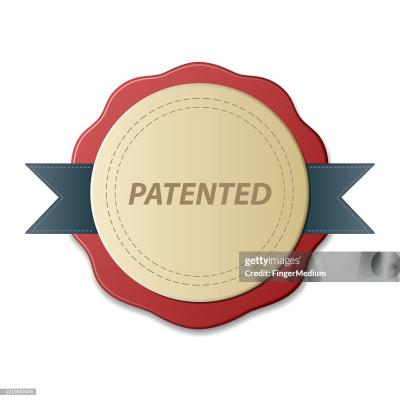Stock vector art is a powerful resource for designers and marketers, offering scalability and versatility that raster images often cannot provide. Unlike raster images, which are pixel-based and can lose quality when resized, vector graphics use mathematical equations to create images that can be resized infinitely without loss of clarity. In this article, we will explore the concept of stock vector art compared to raster images, along with the key differences that make vector graphics a preferred choice in various design projects.
What Are Stock Vector Art and Raster Images

Stock vector art consists of images that are created using vector graphics software, allowing for images to be composed of shapes and lines rather than pixels. These files are typically available in formats such as .AI, .EPS, and .SVG, making them ideal for use in various applications, from print materials to web design. On the other hand, raster images are made up of individual pixels, which define the image. Common formats for raster images include .JPG, .PNG, and .GIF.
Key Differences Between Vector and Raster Graphics

Understanding the differences between vector and raster graphics is crucial for choosing the right type of image for your project. Here are some key differences:
- Scalability: Vector images can be scaled up or down without losing quality, while raster images will become pixelated when enlarged.
- File Size: Vector images often have smaller file sizes compared to high-resolution raster images, making them easier to manage and share.
- Editability: Vector graphics are easier to edit, allowing designers to change shapes, colors, and sizes with ease, unlike raster images that require more intensive editing tools.
- Image Quality: Vector art maintains high quality at any size, whereas raster images can suffer from loss of quality depending on their resolution.
Advantages of Stock Vector Art
When it comes to graphic design, choosing the right type of image can significantly impact your project. Stock vector art offers a range of advantages that make it a preferred choice for many designers. Here are some key benefits:
- Scalability: One of the standout features of vector art is its scalability. Vectors are created using mathematical paths, which means you can resize them to any dimensions without losing quality. This makes them perfect for everything from small logos to large billboards.
- Customization: Vectors are incredibly versatile. You can easily change colors, modify shapes, and adjust details without degrading the image. This flexibility allows for greater creativity, enabling designers to tailor visuals to fit specific brand needs or personal tastes.
- File Size: Because vectors are comprised of paths rather than pixels, they generally have smaller file sizes compared to raster images. This makes downloads faster and storage more efficient, which is especially important when dealing with multiple graphic assets.
- Editing Ease: Editing vector graphics is often simpler than working with raster images. Many vector editing programs allow you to manipulate individual components, giving you fine control over your designs without starting from scratch.
- Professional Appearance: Vectors often have a clean, polished look that can elevate your project. Whether you’re designing marketing materials, infographics, or presentations, using vector art can enhance the overall professionalism of your work.
In summary, the advantages of stock vector art are hard to ignore. Its scalability, customization options, and overall quality make it a stellar choice for any design project.
When to Use Raster Images
While stock vector art has its advantages, there are occasions when raster images are the better choice. Understanding when to use raster graphics is crucial for ensuring that your designs meet your needs effectively. Here are some scenarios where raster images shine:
- Photographic Images: If you’re working with photographs or images that require a rich depth of detail—like textures or nuanced color gradations—raster images are typically the ideal format. They capture the subtleties of real-life scenes much better than vectors.
- Web Graphics: For online use, raster images (like JPEG or PNG files) are common and often preferred due to their compatibility with web standards. Many websites rely on raster images for their photogenic quality and ability to display vibrant colors.
- Complex Color Range: When your design calls for complex imagery with intricate color variations, such as digital paintings or highly detailed illustrations, raster images excel due to their ability to represent subtle gradients, shadows, and intricate detail.
- Specific Image Formats: Certain image formats, like photos saved in JPEG or PNG, are raster-based. If your project requires these formats, you’ll need to use raster images to ensure compatibility and functionality.
Ultimately, the choice between stock vector art and raster images depends on your specific project requirements. By knowing when to use each type, you can ensure that your designs are not only visually appealing but also perfectly suited to their intended purpose.
Cost-Effectiveness of Stock Vector Art
When it comes to budget-friendly design options, stock vector art often shines brighter than raster images. There are several reasons why making the switch to vector graphics can be a more cost-effective choice:
- One-time Purchase: Stock vectors typically involve a one-time fee, whereas raster images may require ongoing licensing costs, especially if you’re using them for commercial purposes.
- Reusable Assets: Once you’ve acquired a stock vector, you can edit and reuse it in various projects without incurring additional costs. This feature is particularly beneficial for businesses that need consistent branding across multiple platforms.
- Time Savings: Using stock vector art can save you time in the design process. Instead of spending hours creating graphics from scratch, you can quickly find a vector that fits your needs, allowing you to focus on other critical tasks.
- Affordable Variety: Many stock vector websites offer subscription models or pay-per-image plans, giving you access to a vast library of designs without breaking the bank.
In conclusion, opting for stock vector art is not just about aesthetics—it’s also a smart financial decision that can save you money in the long run!
Quality and Scalability of Vector Graphics
One of the standout features of vector graphics is their inherent scalability. Unlike raster images, which can become pixelated when enlarged, vector graphics maintain their quality at any size due to their mathematical representations. Here are some key points to consider:
- Infinite Scaling: Need to resize your logo for a billboard or a tiny business card? No problem! Vector graphics keep their sharpness and detail, ensuring your designs always look polished.
- Exceptional Clarity: Vectors create clean, crisp lines and smooth curves—essential for professional branding and marketing materials.
- Easy Editing: The layered structure of vector files allows designers to rearrange or modify elements effortlessly. Whether you want to change colors, shapes, or even text, it’s all manageable without losing quality.
- File Size Efficiency: Vectors usually have smaller file sizes compared to high-resolution raster images, which is a win-win for storage and loading times on websites.
In summary, the quality and scalability of vector graphics not only enhance the visual appeal of your projects but also provide a practical solution for various applications, making them a preferred choice for many designers and businesses alike.
How to Choose the Right Stock Vector Art for Your Project
Choosing the right stock vector art can make all the difference in your project’s success. With countless options available, it’s essential to have a clear strategy in mind. Here are some tips to help you make the best selection:
- Define Your Purpose: Before diving into the search, know what you need the vector art for. Is it for a website, a social media post, or a printed brochure? This will guide your aesthetics and style choices.
- Consider Your Audience: Think about who will see your project. The vector art should resonate with your target demographic. For example, vibrant, playful designs may appeal to children, while minimalist styles might attract a corporate audience.
- Match the Style: Ensure the vector aligns with your brand’s identity. Whether you prefer modern, retro, or grunge aesthetics, consistency is key to maintaining a strong brand image.
- Check for Versatility: Opt for vectors that can be easily customized or adapted for different formats. Look for elements that can be colored, resized, or modified without loss of quality.
- Review Licensing Agreements: Different stock vector sources have varying licensing terms. Make sure the usage rights meet your needs, especially for commercial projects.
Lastly, don’t hesitate to experiment! Sometimes, the unexpected choices can add a unique flair to your work.
Best Places to Find Stock Vector Art
Ready to explore the vast world of stock vector art? Here are some of the top platforms where you can find high-quality, diverse vector graphics:
| Website | Key Features |
|---|---|
| Shutterstock | Huge library, subscription options, and premium quality. |
| Adobe Stock | Seamless integration with Adobe Creative Cloud apps and a broad selection. |
| Freepik | Offers free and premium vectors, along with various styles. |
| Vecteezy | Community-driven site with a mix of free and paid options, ideal for discovering new artists. |
| Creative Fabrica | Specializes in a range of creative designs, including fonts and graphics. |
As you explore these platforms, remember to use filters to narrow down your search and find exactly what fits your project needs. Happy designing!
Common Misconceptions About Vector Art
When it comes to stock vector art, there are quite a few myths floating around that can steer designers away from this fantastic resource. Let’s tackle some of these common misconceptions to help clarify the value of vector graphics:
- Misconception 1: Vectors are only for simple graphics. Many people believe that vector art is only suitable for basic designs or illustrations. In reality, vectors can be incredibly complex—think of detailed illustrations and intricate logos that preserve clarity at any size.
- Misconception 2: Vectors cannot be used for photos. While it’s true that vectors aren’t the best choice for photorealistic images, they’re perfect for creating stylized graphics or overlays that can complement photographs beautifully.
- Misconception 3: Vectors require specialized software. While programs like Adobe Illustrator are popular for editing vector files, many user-friendly options exist now, such as Canva and Inkscape, that allow anyone to work with vector graphics without a steep learning curve.
- Misconception 4: Vectors can’t be edited easily. This is another false belief! Most vector files can be edited easily, allowing you to change colors, shapes, and sizes without any loss of quality.
Dispelling these myths helps to highlight the potential and versatility of vector art. Understanding what vector graphics can do opens the door to a world of creative possibilities!
Conclusion on Using Stock Vector Art vs Raster Images
As we’ve explored, choosing between stock vector art and raster images isn’t just about preference—it’s about understanding the specific needs of your project! Here are a few takeaways to consider:
| Feature | Stock Vector Art | Raster Images |
|---|---|---|
| Scaling | Infinitely scalable without loss of quality | Quality degrades when scaled up |
| File Size | Generally smaller file sizes | Can be larger, especially high-res images |
| Editing | Easily customizable and editable | Limited editing capabilities post-creation |
| Best Use Cases | Logos, icons, print materials | Photographs, detailed textures |
Ultimately, the best choice will depend on your specific needs and goals. If you’re after versatility, scalability, and a clean look, stock vector art is the way to go. However, for rich, detailed imagery, raster images reign supreme. Understanding these differences ensures you make informed decisions that elevate your design projects and resonate with your audience!

